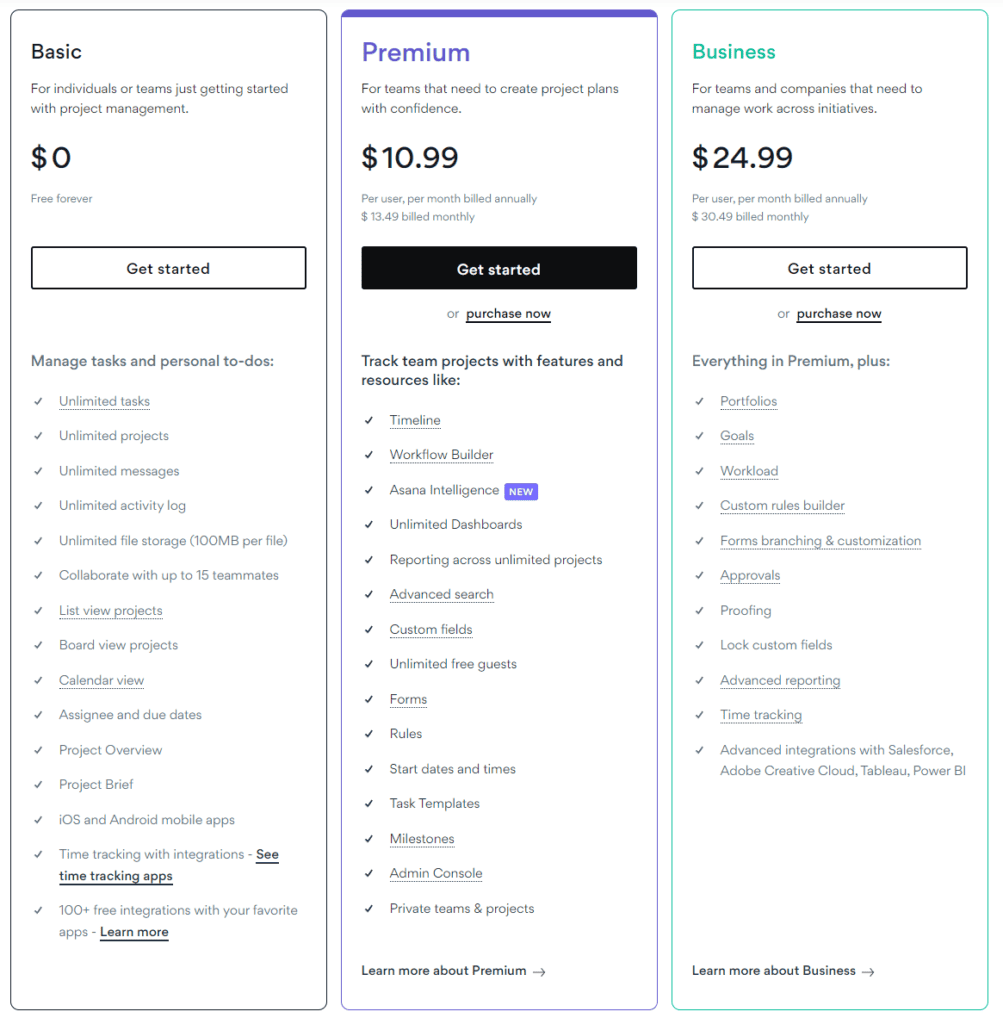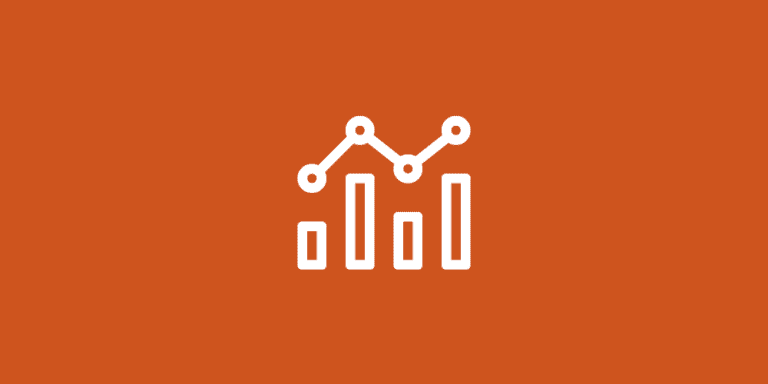2023 Asana Pricing Guide – Compare Free and Paid Plans

Welcome to the world of Asana, where project management and team collaboration become seamless and efficient.
With various pricing plans designed to cater to different team sizes and project complexities, it’s no wonder Asana has made its mark in the realm of project management tools.
But how do you choose the right plan for your organization? Let’s dive into the 2023 Asana Pricing Guide and compare free and paid plans to help you make an informed decision.
Key Takeaways
- Compare Asana’s 4 pricing plans to determine the best fit for your organization.
- Look out for discounts and fees when evaluating options, and compare with alternatives like ClickUp & monday.com.
- Make use of Asana’s features & integrations to maximize its value!
Asana Pricing Overview

Asana offers four pricing plans to suit different team sizes and project management needs:
- Basic
- Premium
- Business
- Enterprise
The platform can handle an unlimited number of users, making it a scalable solution as your organization grows. Asana’s pricing is based on a “per user” basis, which affects the overall cost.
Each plan comes with a range of features, with the free Basic plan, also known as the free version, offering essential tools for small teams, and the Premium, Business, and Enterprise plans providing more advanced features for larger teams and complex projects. Deciding on the right plan depends on your organization’s requirements and budget.
We’ll delve into the specifics of each plan to aid your decision-making process.
Free Basic Plan
The free Asana Basic plan is great for small teams or beginners. It lets up to 15 members manage projects with all the basic tools they need. This includes endless tasks, projects, and storage space. Plus, discover more about how automation tools can make work smoother for other businesses.
Nevertheless, if your team needs more sophisticated features or has exceeded the Basic plan’s constraints, contemplating an upgrade to Asana’s paid plans could be beneficial. These plans bring additional tools and features to the table, serving diverse team sizes and needs.
Premium Plan
Asana’s Premium plan is packed with advanced features, such as custom fields, timeline view, and automation, designed to help teams streamline their project management processes. The plan costs $10.99 per user each month when billed annually. Alternatively, the plan would be charged at $13.49 per user each month when billed monthly. This investment can greatly benefit teams needing stronger project management tools and looking to automate workflows for recurring tasks and issues.
With the Premium plan, you also gain access to:
- Timeline view
- Detailed analytics
- Unlimited free guests
- Custom templates
- Task dependencies
- Asana forms
- Workflow builder
- Task automation
These features, along with advanced security options like the admin console and individualized customer support, make the Premium plan an excellent choice for teams ready to level up their project management capabilities.
Business Plan
The Asana Business plan is designed for larger teams and organizations, offering advanced resource management, integrations, and customizations at an Asana cost of $24.99/user/month when billed annually or $30.49/user/month when billed monthly. This Asana pricing plan includes Project Portfolio Management (PPM) and resource management tools, helping you keep track of work across multiple projects and manage resources effectively. To explore more options, check out other Asana pricing plans tailored to suit your team’s needs.
In addition to the features available in the Premium plan, the Basic Premium Business Enterprise plan, also known as the Business plan, offers:
- Business approvals
- Proofing
- Custom rule tools
- Form branching
- Integrations with Salesforce, Adobe Creative Cloud, Tableau, and Microsoft Power BI
The Business plan is ideal for organizations that require a comprehensive project management solution with robust resource management capabilities and seamless integrations with other tools.
Enterprise Plan
The Asana Enterprise plan provides the most comprehensive set of features, including advanced security and administrative controls, making it well-suited for larger organizations with complex project management needs. Custom pricing for the Enterprise plan is available upon request, allowing you to tailor the plan to your organization’s specific requirements.
The Enterprise plan offers:
- Advanced admin control
- User management
- Top-notch security with a high uptime
- 24/7 priority support
If your organization requires a high level of control, customization, and security, the Enterprise plan might be the perfect fit for you.
Choosing the Right Asana Plan

The choice of the best Asana plan for your organization hinges on multiple factors like team size, complexity of projects, and budget constraints. Asana’s free Basic plan is suitable for small teams with basic project management needs, while the Premium, Business, and Enterprise plans provide more advanced features for larger teams and complex projects.
Before making a decision, consider the features and benefits of each plan in relation to your organization’s requirements. This may include evaluating the need for:
- Advanced resource management
- Integrations
- Customizations
- Security features provided in the Business and Enterprise plans
By comparing the costs and benefits of each plan, you can determine which one offers the best value for your organization.
Also, consider any potential hidden costs or fees, such as charges for extra users or premium integrations, when evaluating Asana’s pricing plans. Keeping these factors in mind will help you make an informed decision and choose the right Asana plan that best suits your organization’s needs and budget.
Asana Pricing Discounts and Offers

Asana offers several discounts that can make its plans more affordable for eligible users. For instance, if you opt for annual billing, you can enjoy a 10% discount on the Premium plan, bringing the cost down to $108 per year instead of $120. This can be a great way to save money while still enjoying the advanced features of a paid Asana plan.
Furthermore, nonprofit organizations can take advantage of Asana’s 50% Nonprofit discount for monthly or annual plans. This allows eligible nonprofits to access Asana Premium or Asana Business at a significantly lower cost, enabling them to focus on their mission-critical work while effectively managing their projects and resources.
Hidden Costs and Fees

Despite the transparency in Asana’s pricing plans, you should remain vigilant for any potential obscured costs or charges that might pop up. For example:
- Asana doesn’t charge extra for additional users on paid plans
- Guests of an organization don’t count towards the paid plan
- Users can be members of multiple teams without any extra cost
Additionally, Asana charges for premium integrations. These costs should be taken into account when evaluating Asana’s pricing plans and determining the overall value of your investment. By being aware of any hidden costs or fees, you can make a more informed decision when selecting the right Asana plan for your organization.
Evaluating Asana’s Paid Plans
To assess the value of Asana’s paid plans, compare the features, benefits, and costs of each plan and determine if upgrading is worth the investment for your organization. For example, the Premium plan offers a range of advanced features, such as:
- Timeline
- Workflow Builder
- Asana Intelligence
- Unlimited dashboards
- Reporting across unlimited projects
All of these features can significantly enhance your team’s productivity and project management capabilities with the help of a project management system.
Similarly, the Business and Enterprise plans provide even more advanced features and customization options designed to cater to larger teams and more complex projects.
By carefully considering the features and benefits of each paid plan relative to your organization’s needs and budget, you can determine if upgrading to a paid Asana plan is a worthwhile investment.
Furthermore, you should balance the value of Asana’s paid plans against other project management solutions like ClickUp and monday.com.
By exploring these alternatives and comparing their features, pricing, and benefits, you can make an informed decision about the best project management solution for your team.
Comparing Asana Alternatives
As you evaluate Asana’s pricing plans, it’s also worth exploring alternative project management solutions to ensure you choose the best tool for your team’s needs and budget. ClickUp and monday.com are two popular Asana alternatives worth considering.
ClickUp offers a range of features not available in Asana, such as:
- Multiple views
- Customizations
- Team collaboration
- Real-time reporting
- Time tracking
Meanwhile, monday.com’s pricing is based on a per-seat model, with a three-seat minimum on each plan, generally making it more affordable than Asana’s plans.
By comparing Asana with its alternatives and taking into account their features, pricing, and benefits, you can make a well-informed decision about the most suitable project management solution for your organization.
Tips for Maximizing Asana’s Features
For optimal usage of Asana’s features, effective utilization of the platform is crucial, along with keeping abreast of the latest updates and enhancements.
One way to enhance your Asana experience is by integrating it with other tools like Zapier, a popular workflow automation tool that can streamline your workflow by connecting Asana with Gmail, Slack, and other apps.
Moreover, you can stay informed about Asana’s latest updates and improvements by subscribing to their blog, following them on social media, and signing up for their newsletter.
By staying informed and making the most of Asana’s features and integrations, you can ensure your organization maximizes the benefits of this powerful project management tool.
Summary
In conclusion, Asana offers a range of pricing plans to cater to different team sizes and project management needs. From the free Basic plan for small teams to the comprehensive Enterprise plan for larger organizations, there’s an Asana plan suited for every organization.
By carefully evaluating the features, benefits, and costs of each plan, you can determine the best fit for your team and budget.
Don’t forget to consider any potential hidden costs or fees, explore Asana alternatives, and maximize the platform’s features to make the most of your investment.
With the right Asana plan in place, your organization can streamline project management, boost collaboration, and ultimately achieve greater success.


